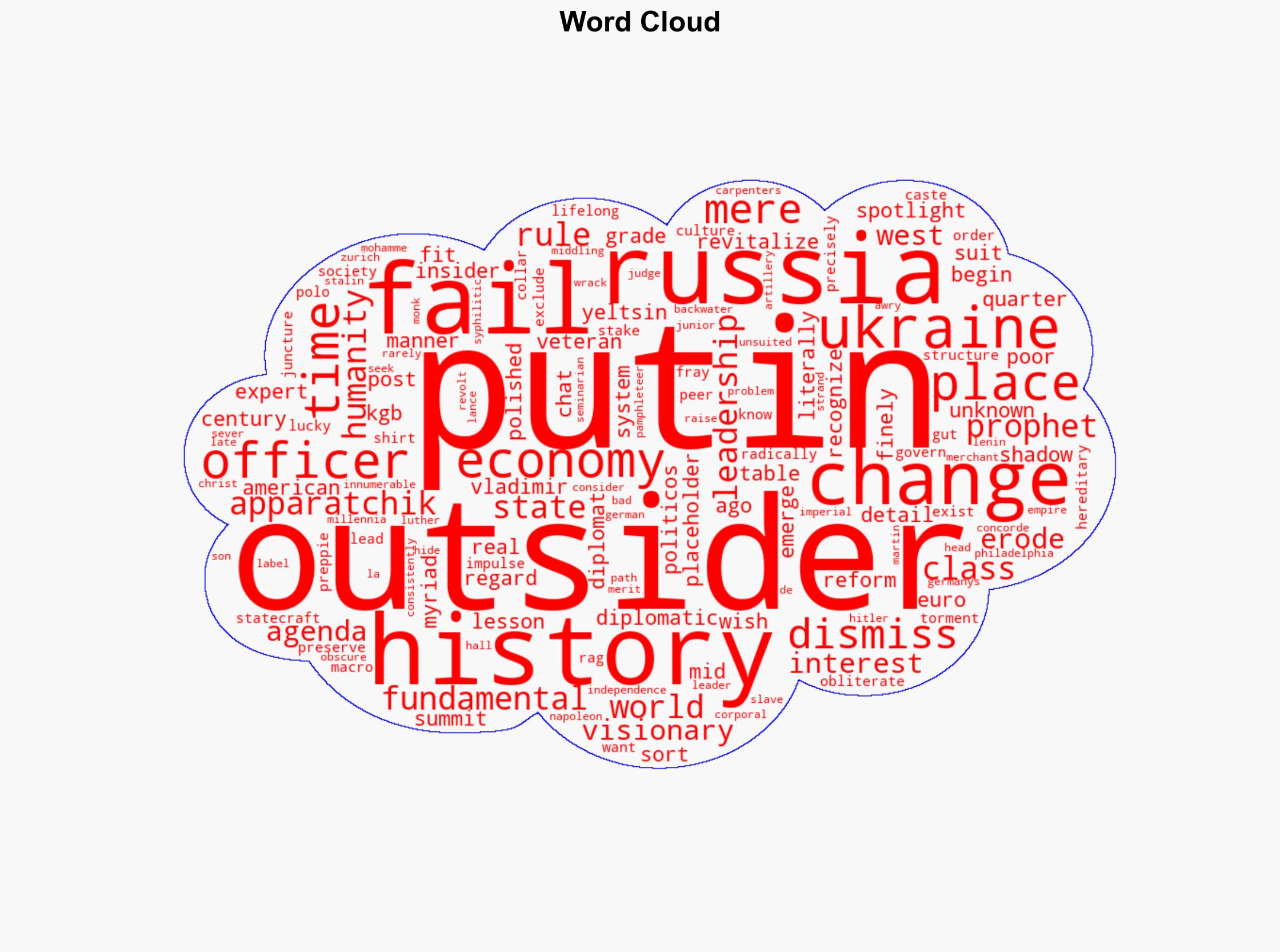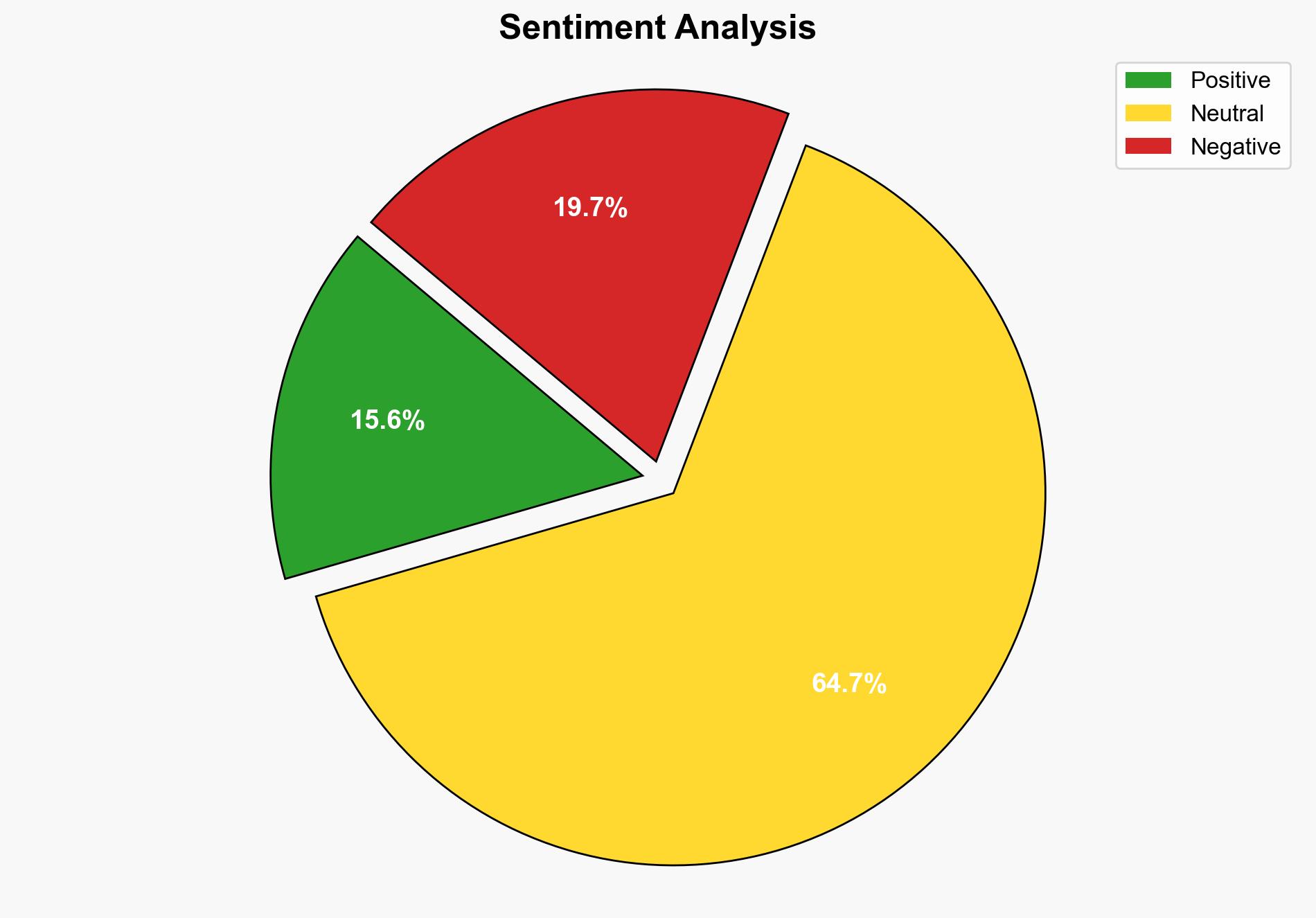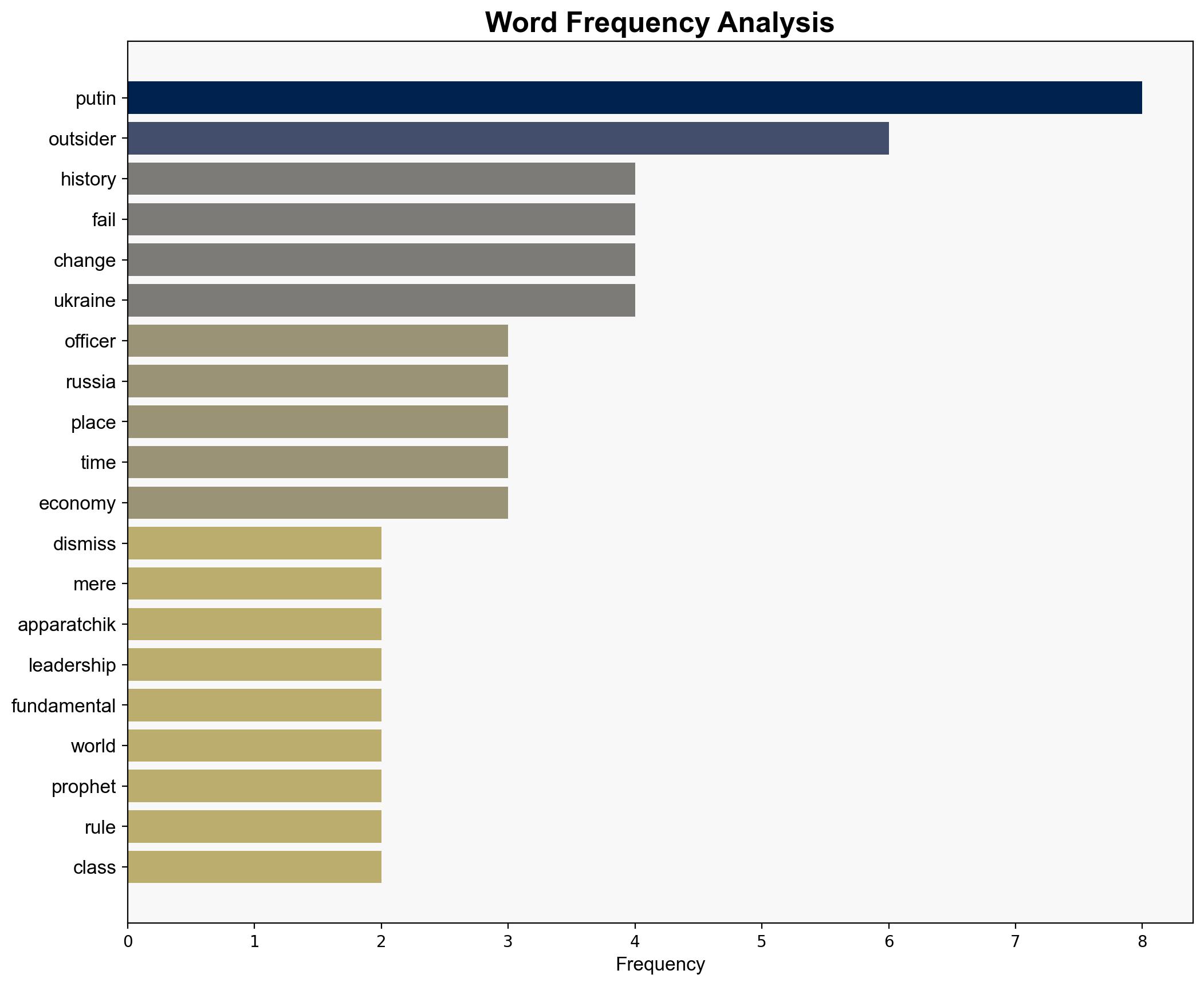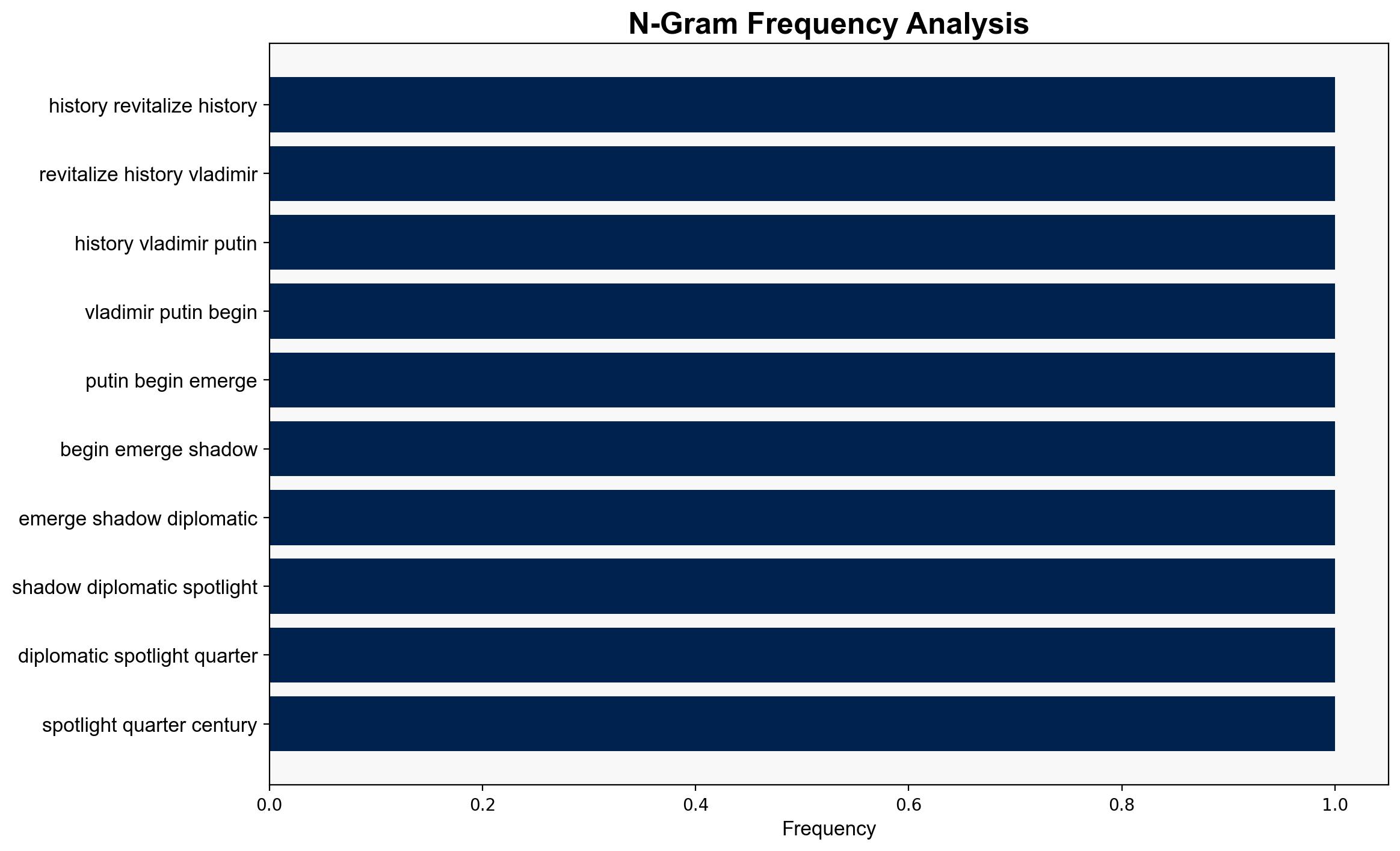Still Underestimating Putin – Hoover.org
Published on: 2025-09-11
Intelligence Report: Still Underestimating Putin – Hoover.org
1. BLUF (Bottom Line Up Front)
The strategic judgment is that Vladimir Putin’s actions are driven by a calculated long-term vision to restore Russia’s influence, rather than impulsive aggression. This hypothesis is better supported by the evidence, with a moderate confidence level. Recommended action is to strengthen NATO’s eastern defenses and increase support for Ukraine to counterbalance Russian ambitions.
2. Competing Hypotheses
1. **Hypothesis A**: Putin’s aggressive actions are part of a strategic plan to restore Russia’s historical sphere of influence and counter Western encroachment. This involves calculated risks and leveraging perceived Western weaknesses.
2. **Hypothesis B**: Putin’s behavior is primarily reactive, driven by internal pressures and miscalculations, leading to opportunistic and sometimes erratic foreign policy decisions.
Using the Analysis of Competing Hypotheses (ACH) 2.0, Hypothesis A is more supported. The evidence of consistent strategic moves, such as the annexation of Crimea and the invasion of Ukraine, aligns with a long-term vision rather than reactive impulses.
3. Key Assumptions and Red Flags
– **Assumptions**: Hypothesis A assumes Putin has a coherent long-term strategy and is not significantly constrained by domestic opposition. Hypothesis B assumes internal pressures significantly influence his decisions.
– **Red Flags**: Over-reliance on historical analogies may lead to misinterpretation of Putin’s intentions. Lack of direct insight into Kremlin decision-making processes is a significant blind spot.
– **Deception Indicators**: Public statements by Russian officials may be designed to mislead Western observers about Russia’s true intentions.
4. Implications and Strategic Risks
– **Geopolitical**: Continued Russian aggression could destabilize Eastern Europe, challenge NATO cohesion, and embolden other authoritarian regimes.
– **Economic**: Sanctions may have a delayed impact, but prolonged conflict could strain global markets and energy supplies.
– **Cyber**: Increased likelihood of cyber operations targeting Western infrastructure as a form of asymmetric warfare.
– **Psychological**: Prolonged conflict may erode public support for Western involvement in Ukraine, leading to policy shifts.
5. Recommendations and Outlook
- **Mitigation**: Enhance intelligence-sharing among NATO allies and increase military presence in Eastern Europe.
- **Opportunities**: Leverage economic sanctions to weaken Russian resolve and incentivize diplomatic solutions.
- **Scenario Projections**:
– **Best Case**: Diplomatic resolution leads to de-escalation and partial withdrawal of Russian forces.
– **Worst Case**: Escalation into broader regional conflict involving NATO.
– **Most Likely**: Prolonged stalemate with periodic escalations and continued economic sanctions.
6. Key Individuals and Entities
– **Vladimir Putin**: Central figure in shaping Russia’s strategic direction.
– **NATO**: Key entity in countering Russian aggression.
– **Ukraine**: Primary target of Russian military actions.
7. Thematic Tags
national security threats, geopolitical strategy, Eastern Europe, NATO, Russian foreign policy




